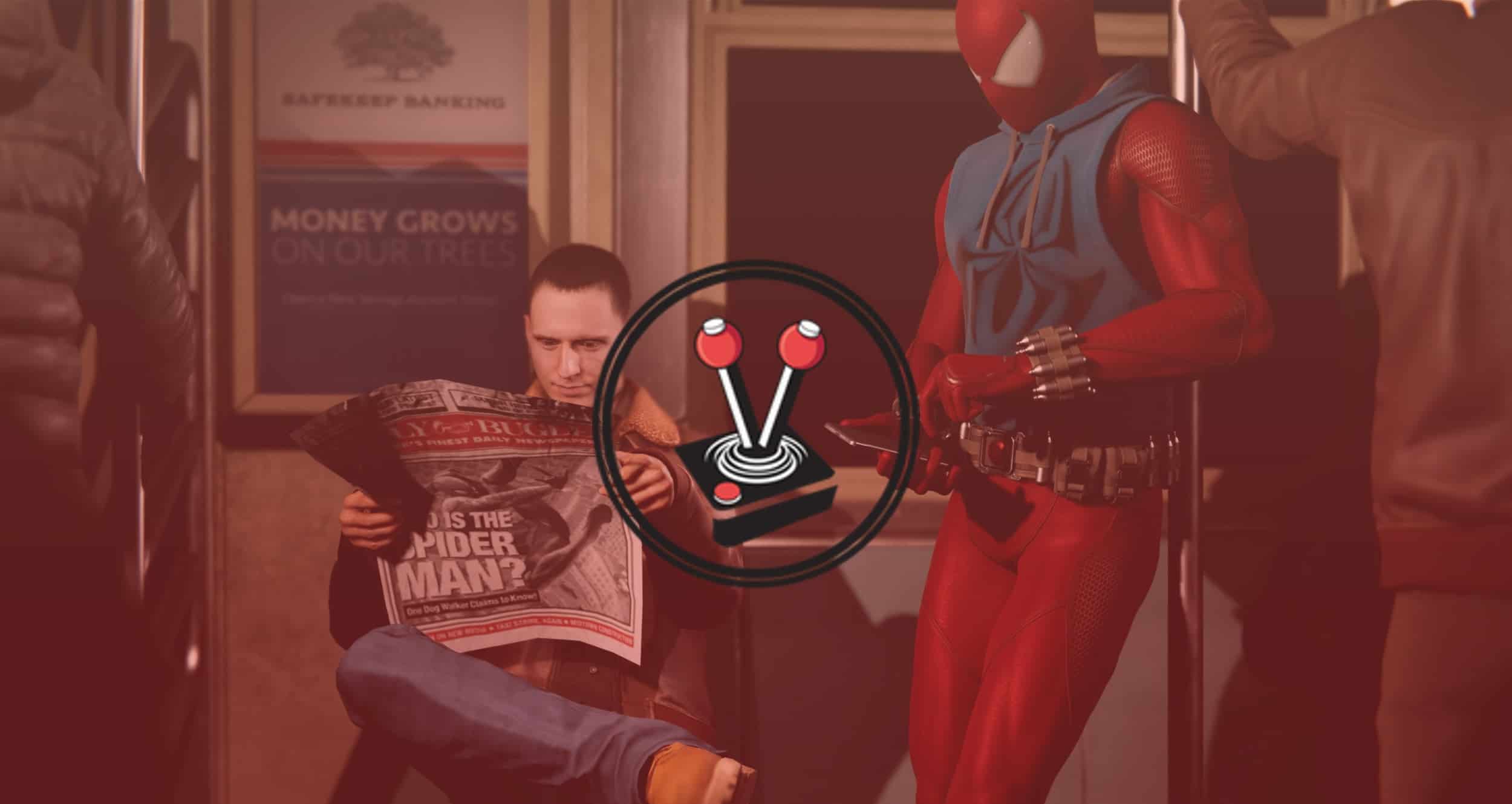Review for PS5 | Review for PC
When I say “open world superhero game”, I guarantee you that, not even a month ago, the first thought on every person’s mind would have been the Batman Arkham franchise. For years, no game could come close to the glory that was Arkham: Asylum. It had the combat, the open-world gameplay, and the superhero clout many modern-day big screen hard-hitters could only dream of. Well, that was until Marvel’s Spider-Man swung along!
I have to be honest: when Insomniac Games announced the title, I had no hype for it at all. The on-stage demo looked slow and boring, and Spider-Man seemed like he had no personality. Similarly, Fisk looked menacing just for the sake of being ‘menacing’, and the chopper Spider-Man brought down looked like a b-movie set piece. That is, until I saw it myself, two years later, in person and in game. At first glance, Marvel’s Spider-Man may not look the part; but gosh darn, it is as close to the most perfect superhero game that you could ever imagine!
In this Vamer’s Marvel’s Spider-Man review, I go over exactly what it is that makes this game just so incredibly good.
New Spider-Man, who dis? [Story]
If you booted Marvel’s Spider-Man up looking for an origin story, you will be hard pressed to learn that there is no such thing here. Instead, the game centres around a Peter Parker who has already enjoyed an eight-year-long tenure as the friendly neighbourhood Spider-Man.
Not only does this mean that players do not get a high-school or college kid learning the ropes, but it also means that Peter is more than capable of taking out the everyday bad guy. As such, in Insomniac’s version of the friendly neighbourhood spider, Peter and Mary Jane (MJ) have called it quits – six months prior to the game’s start. Peter also left his job at the Daily Bugle, and has opted to work for Doctor Otto Octavius instead. This is a very different and grown-up Peter Parker. Fortunately, he is still the witty, friendly and morally innocent dude that everyone knows and loves from the comics.
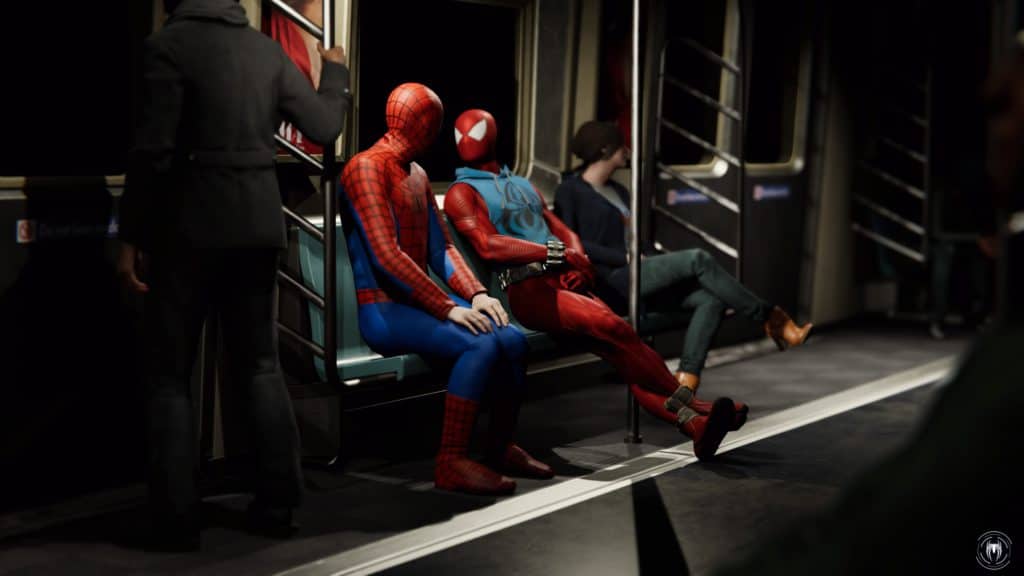
Marvel’s Spider-Man makes it very clear, early on, that Peter is both a good Spider-Man and family man. However, eight years has clearly not been enough time for him to find a good balance between those two worlds. Naturally, Peter struggles to balance his real-life obligations with those of his superhero counterpart. He is constantly late to meetings and often ends up disappointing his peers. Similarly, the city is not at all free of crime and misdeeds since, you know, Spider-Man does not operate 24/7. Fortunately, his family, friends, and even his boss (Octavius) have grown used to his little imperfections. Unfortunately, those imperfections are only set to be emphasised over the course of the game.
After finally taking down the Kingpin, Spider-Man effectively creates a gap in power in the governing crime syndicates in and around Manhattan. Soon after, a brand new supervillain enters the scene: Mister Negative. For a brief period, no one knows who he is or what his motives are. One thing is certain, however: things are not looking good for Spider-Man. So much so, that good old J. Jonah Jameson’s podcast will tell Spider-Man that he sucks every moment the old fart can get!
While all of this is going down, Peter’s long-term friend, mentor, and aforementioned boss, Doctor Otto Octavius, seems to be working on something that might change the world forever: cost-effective prosthetics. However, thanks to Norman Osborne, who is the mayor of the city and opposing scientist, Octavius Industries gets shut down and both Peter and Otto have to work without compensation. This results in Peter losing his apartment, and increases his stress levels during crime-fighting tirades. Not good, right? Right.
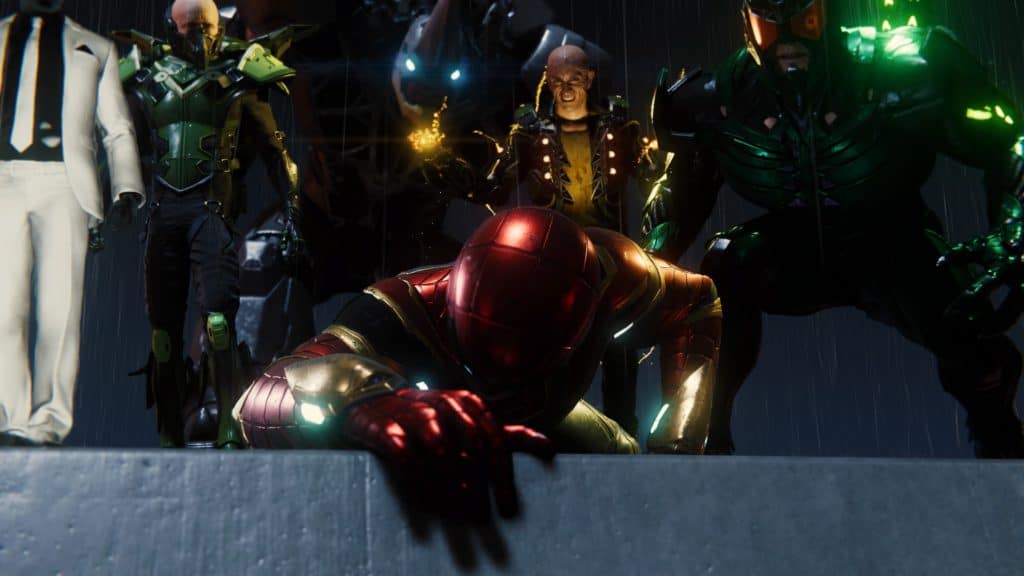
By the end of the first act, Marvel’s Spider-Man effectively sets up relationships no comic book fan would ever have imagined, and characters with new and unique spins that only the creative minds at Insomniac Games could have thought of. As the second act comes to a close, however, things spiral a tiny bit more out of control, for both Spider-Man and the story as a whole.
Once the inevitable fight between Mister Negative and Spider-Man ends, and as Peter celebrates, an upset MJ refuses to speak to him, and everyone else just carries on with their lives. Then something big happens: Ryker’s prison experiences a huge breakdown and hundreds of prisoners suddenly wreak havoc. This opens the floodgates, which spills onto The Raft, a supermax secure facility with its own power grid that houses all of Spider-Man’s old villains.
The first mission of the third act then reveals it all: what Mister Negative wanted from the start, and whom he worked for. It is a proper twist that, thirteen hours in, would not have been so obvious if it had not been spoiled for me on launch day. Nevertheless, it is a neat little twist that comic book fans would probably have expected. The rest of the act deals with the escaped villains and their plans with Spider-Man.
With the huge story splurge out of the way, I would like to quickly mention another incredibly well-done addition to the game: Miles Morales.
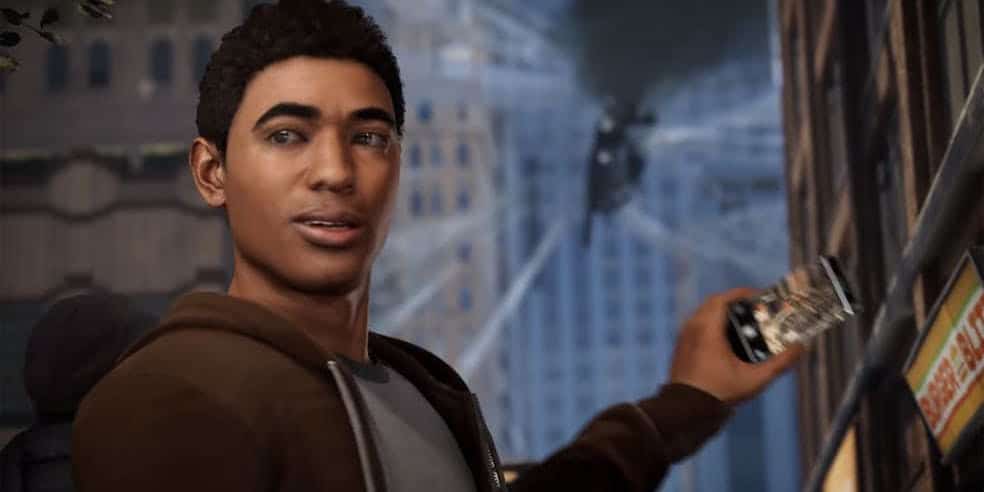
As mentioned, the story sets up very memorable characters and relationships. The relationship that both Peter Parker and Spider-Man have (as two different individuals) with Miles Morales, is phenomenal. Rather early in the game, Peter Parker befriends an officer. We soon learn that the officer is Miles’ father. During a ceremony for the officer, Mister Negative enters the scene. The mission that follows serves both as a brief “origin story” for Miles Morales, as well as a beautifully crafted and emotionally powerful narrative arc for Peter Parker.
It must also be mentioned that the game features multiple segments where the player becomes removed from Spider-Man’s shoes, and instead takes on the role of either MJ or Miles Morales. These little segments are few and far between, and I will go into detail about them in the gameplay section, but they do a stellar job of building up the characters whenever Peter is not around.
I seldom go into as much detail about the narrative of a game as I do here, but I simply cannot get enough of Marvel’s Spider-Man. Insomniac crafted an incredible story with characters that are as memorable as the 28 amazing suits Spider-Man can wear in the game. Plus, the Stan Lee cameo in this game is second to none. 10/10 would watch again!
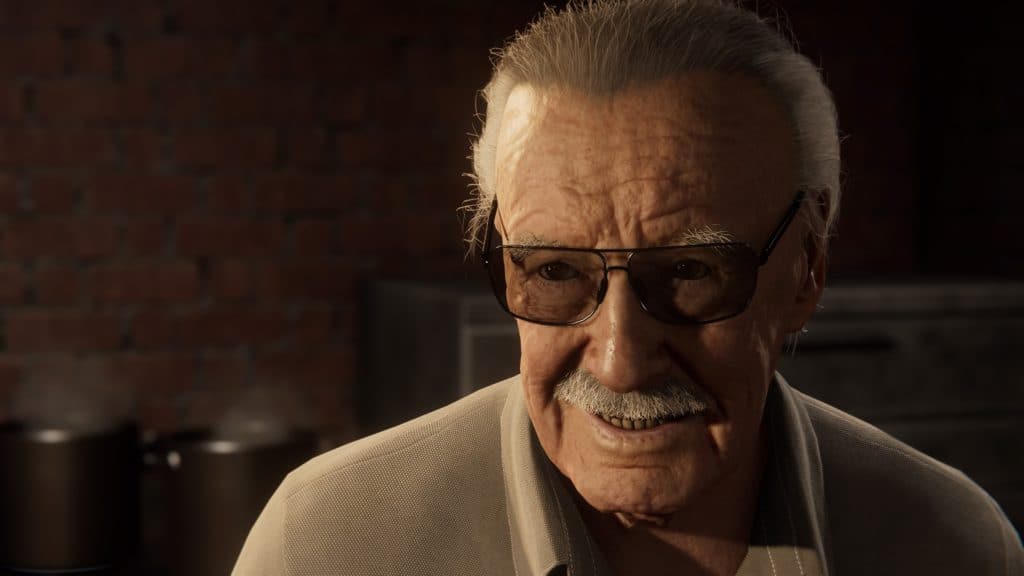
You are the Spider-Man [Gameplay]
At its core, Marvel’s Spider-Man is all about web-slinging and free-roaming goodness, and my gosh does it deliver. Swinging around is an amazing and spectacular thing to experience. This rings even truer when you finally get to upgrade your web-slinging capabilities with fancy tricks and speed-enhancing abilities.
Granted, the learning curve is pretty jarring at first. The game seamlessly transitions from cutscene into free-roam action at the very start, but only offers brief tutorials from there on out. It is mostly up to the player to remember what buttons to press and how to manoeuvre around the various skyscrapers dotted around Manhattan. With that said, if you manage to master it, you will be rocketing through the city like a true web-slinger!
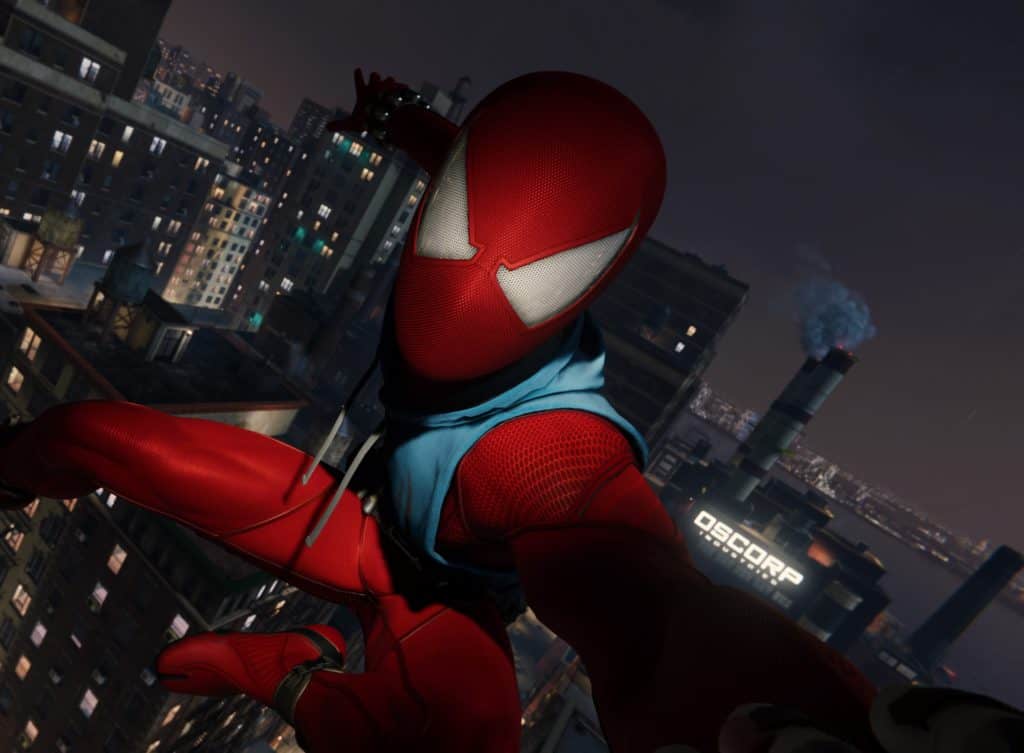
Speaking of the skyscrapers, it must be mentioned that Insomniac Games’ New York is as accurate as you can get in any game. Before I continue, I will note that I have never been to New York myself. However, I have not heard a single bad thing about the adapted New York featured in this game. On the contrary, I have only heard good things: how accurate it feels, how good it looks, and how nostalgic and homesick it makes some critics. Even Hans, who has visited New York several times in the past, made mention in our Marvel’s Spider-Man Unboxing video, of how accurate the included subway station guide is. While the New York featured in the game is as true to the real thing as you can get, Insomniac did take a few liberties here and there – and all for the better. The version of New York in the game will be familiar for anyone who enjoys Marvel’s movies. This is because Insomniac have imbued the city with Marvel’s cinematic legacy. There are quite a few neat easter eggs for players to find in Marvel’s Spider-Man, such as Nelson & Murdock’s law-firm and Alias Investigations, both of which are in Hell’s Kitchen alone; and other locations, like Doctor Strange’s Sanctum Sanctorum. Of course, what is Marvel’s New York without the Avenger’s Tower?
As if that is not enough, you can even tell Insomniac put effort into creating interiors for every single lit room in every building that Spider-Man can climb. While not entirely “real”, and while they often look generic up close, this is the first time I have ever seen work and effort put into creating the illusion that the buildings in an open-world title have depth, and actually feel lived in.
On that same note, I must commend Insomniac on livening up the city they have created. It often happens that open world games end up creating bland and boring locales. So many companies put so much effort into making things look beautiful, that they forget how to make it look lived in. I am glad to report that the city in Marvel’s Spider-Man constantly feels like a real city. Wherever Spider-Man drops down, people are walking or standing around and talking. There are always cars in the streets, traffic jams happening, and highways filling up with civilians returning home from late night shifts or hard days at work. In fact, it is so detailed that Digital Foundry created a neat analysis of the game, and it is definitely worth a watch.
Buildings, inhabitants, and vehicles aside, Marvel’s Spider-Man offers a lot more than just that. Stealth, for instance, is a big part of the game. Whether it seems like it or not, you can pretty much “stealth” your way through 70% of the game. When sleuthing about, Spider-Man can scan his surroundings, which will bring up contextual boxes over the heads of his enemies. These boxes will read “danger” when enemies are seen by others, meaning that a stealth takedown will result in Spider-Man being spotted; or “safe”, which means that Spider-Man can safely take the bad guy out and make his life a little easier in the process.
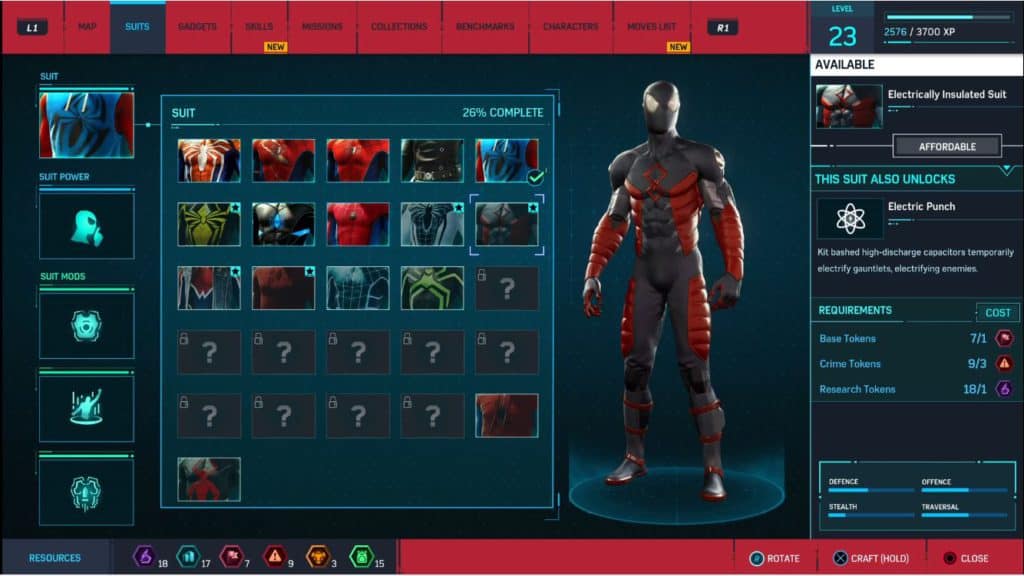
When combat takes a turn for the worst, Spider-Man has an entire gadget belt full of devices at his disposal. Throughout the game, Spider-Man will unlock new and improved gadgets, and get the ability to unlock even more down the line. Using gadgets will deplete their stock one-by-one as you use them, and some of the more powerful gadgets can take a long while to resupply. With that said, I have noticed that performing stealth takedowns and finishers will resupply gadgets at random. In the beginning, this will feel slow and it will be easy to think that Spider-Man’s arsenal is lacking. By the end, however, it is the complete opposite: it feels like you have hundreds of different ways to take out bad guys, and not one of them will feel lesser than the other.
The go-to thing to do in just about every combat situation is to dodge, punch, and web kick the heck out of enemies. These are mapped to Circle, Square, and Triangle, respectively, with Cross being the general jump button in all situations. However, as you unlock new abilities and moves in the character progression menu, combat evolves into something of a spectacle. By the end, I could yank a rocket out of the air, throw it back at one of the bigger enemies, target a few more villains, before finishing off three others with electric punch enhanced finishers. Just glorious!
Marvel’s Spider-Man has such a good combat system that it is difficult not to compare it to the likes of the Arkham games. I have seen this comparison a million times over online, and have also made the comparison myself in the past. However, after doing a bit of digging, I found out that the combat system goes even farther back than I thought. Did you know that the fighting system in Marvel’s Spider-Man is not a derivative of Arkham at all? That is right, the fighting system featured in Marvel’s Spider-Man actually originated in Spider-Man 2 (2004). That is a whole five years before Arkham Asylum released and “changed the superhero game” genre for good. As someone who played Spider-Man 2, I am loathed to admit that I never made that connection until recently.
When all is said and done, and bad guy butts have been kicked in and bombings have halted, Spider-Man also helps around town. Side Missions are not really the game’s bread and butter, and there really is not a lot of them, but the few that are there, are decent. Among them is an ongoing Side Mission questline where Spider-Man needs to find missing students who have been corrupted by Mister Negative; a Side Mission where Spidey does some private-eye work for a desperate wife (there is a cool little GTA IV reference in this one); and even a questline where you take on Tombstone!
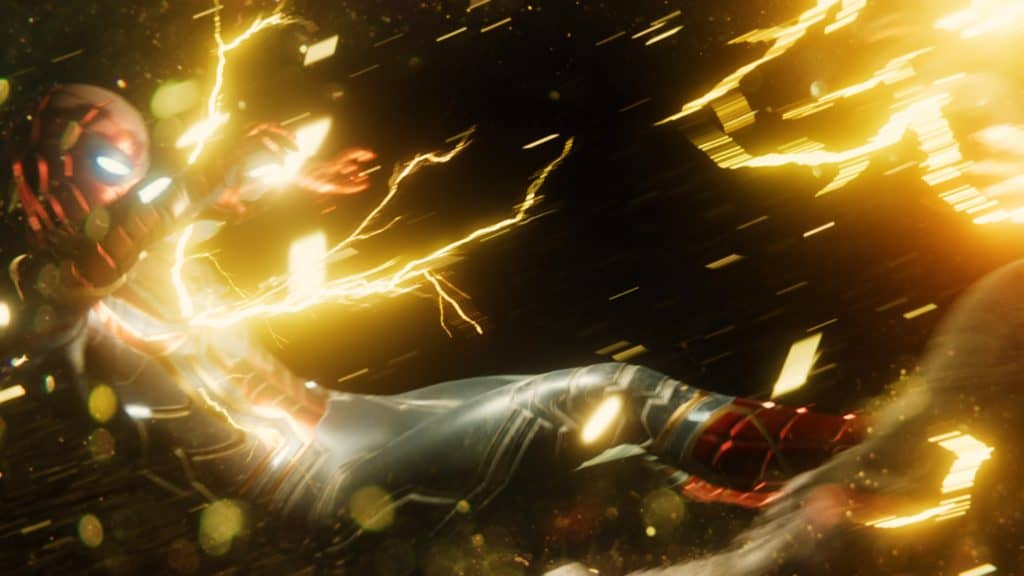
As you carry on with the main campaign, the story will naturally introduce characters such as Mary Jane Watson and Miles Morales. What was unexpected, however, is that you get to play as them too. Insomniac incorporated these characters into quick, stealth-based missions – giving players a slight pause from being Spider-Man. While not going into too much detail, I can say that just about all of the missions were full-on stealth sections; where getting spotted results in a fail state that needs to be reloaded. I loved these missions because they not only proved to be engaging, but they showed a specifically civilian side to the world in which Spider-Man is an actual hero. This “normal” feeling that each of these sections left me with was especially weighty in the grander scheme of things.
Another big part of the game, when Spider-Man is not doing the campaign or the few well-put together Side Missions, are the various tasks Insomniac baked into the city. These consist of Challenges (time trial-type missions), Base Challenges (where Spider-Man takes on entire bases), Crime Challenges (where Spider-Man fights crime), and Research Challenges, all of which evolve over time to include extra hurdles and more difficuly tiers – perfect for those who enjoy messing around the city, versus continuing the story (or even for once the story is concluded). Completing any of the challenges will reward the player with Tokens, which can be used to update gear and unlock more Spidey Suits. Accompanying those are collectables in the form of Landmarks, Backpacks, and Black Cat Stakeouts.
Landmarks is an easy way to tour the city of New York, see some sights, take a few photographs, and learn a bit of the fictional history Peter Parker has lived through. It also acts as a nice gateway to the various easter eggs strewn in both hidden places and in plain sight. During the end-game, Spider-Man can even find hidden photography points that will unlock a hidden suit! Additionally, both the Black Cat Stakeouts and the Backpack collections will net Spider-Man a brand new suit after they are completed. These are not limited to the end-game, like the hidden suit, and are nice ways to learn more about the world Peter lives in.
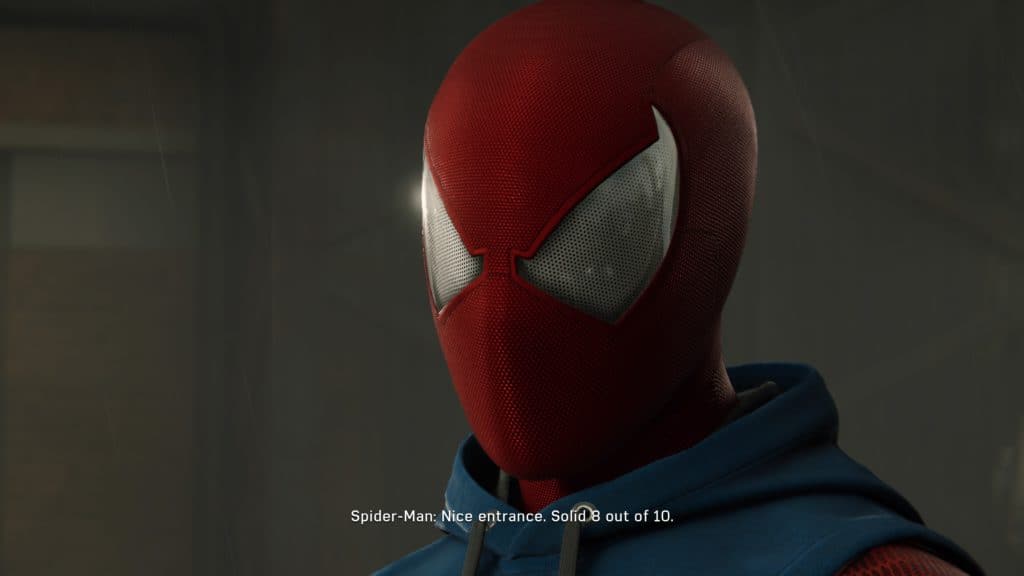
As if all of that is not enough, the game also features “Benchmarks”. These are special experience-based rewards that the player will rack up naturally throughout their time with the game. Certain benchmarks include: web-zipping a select number of times, throwing a certain number of enemies off buildings, and diving down through the city and getting as close to the ground as possible before swinging back up and away.
These Benchmark rewards are a nice way of giving players a constant source of experience, especially after becoming exhausted with fighting crime and taking photos all day. I often found myself just swinging through the city, ignoring police radio broadcasts, and calls to collect pigeons, after just about every session. This is not a slight to what the game offers at all: it is just that swinging through the city is such a calming, yet spectacular experience, one that serves as a great way to spend time in the game.
Last, but certainly not least, Marvel’s Spider-Man also features a full-fledged Photo Mode. As you might expect, Photo Mode lets players take photos of the game, Spider-Man, and the people around him with ease. Players can invoke Photo Mode via the pause menu. From there, you are met with a neat easy to understand User Interface that lets you change the camera angle, add filters, and even manipulate the depth of field. Photo Mode also features an entire host of frames. These frames dramatically change the way photos are perceived, and come in multiple forms: such as a cool TV display, a photo strip, and even a comic book cover!
Once you are done getting the perfect frame, angle, and even selecting an ’emote’ for Spidey’s visor, you can go into an additional tab to add stickers to your photos. Stickers include small emoticon-type emotes similar to what you can find on Instagram, and even cool speech bubbles, and Spider-Man logos. You know, in case you want to create an actual comic book cover – you might want to use the Comic Book Classic Suit while you are at it. When done, just hide the UI with Triangle, and share or save away!
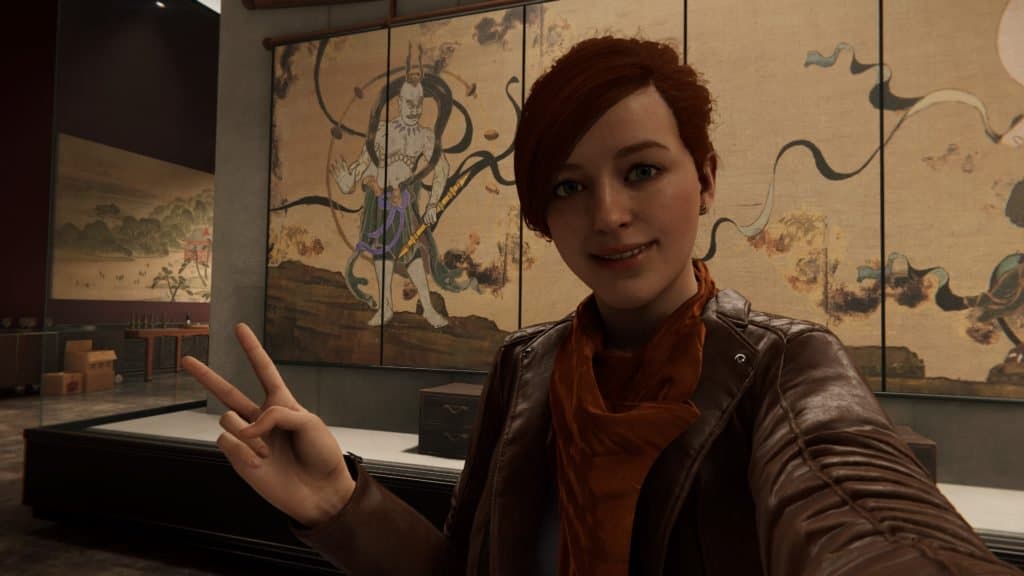
Smoother than Scorpion’s Tail [Performance & Visuals]
So the game clearly has the story, the characters, and the gameplay to back it up, but does it perform as well as it looks and plays? The short answer is: yeah, pretty much. The long answer is just as simple, with one caveat. Let me explain.
In my twenty-odd hours with Marvel’s Spider-Man, I jumped from multiple rooftops, dove through tall buildings down into busy streets, complete with explosive combat, smoke and particle effects all over the place, helicopters in the sky with rockets reigning down over my head, and jetpack-donning Spider-Man killers hovering in the sky, poised to take me out at the slightest late dodge; and not once did I experience a single dropped frame.
What astonishes me, even more, is that while all of that was going on, Insomniac continued to surprise with small little details. A great example of this, continuing on from above, is whilst I dodged away onto the building and ran up and way, so I could take one of the jetpack guys out of the sky, I noticed that the night sky lit up real rooms in the buildings around me. The “depth” and “real room” effect implemented in the game rings true even when all the crazy has escaped the bag and everything has devolved into a literal clusterf— err… Fisk.
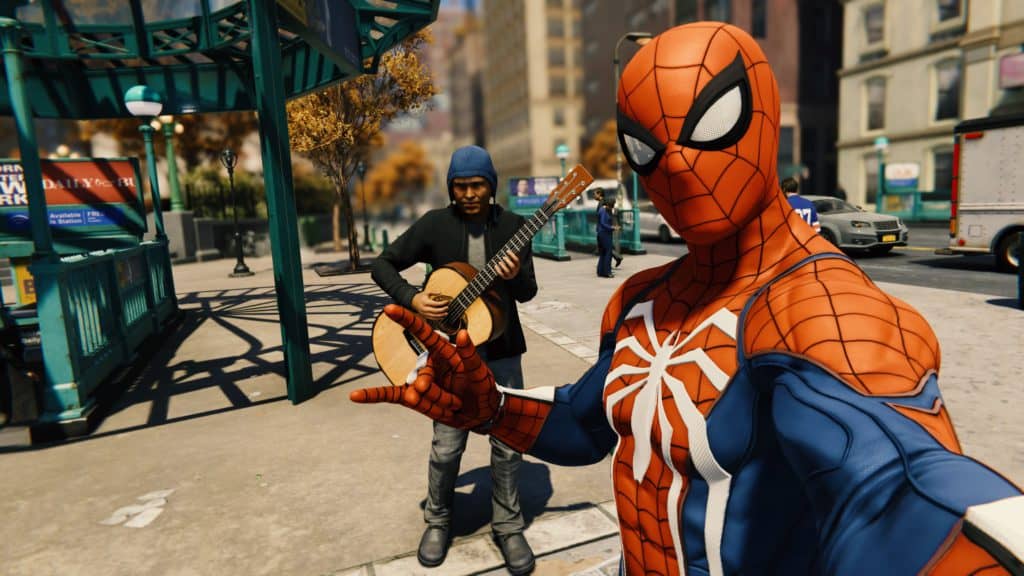
Beautiful spectacles and views do not extend to just night skies and combat either. A huge chunk of the game takes place during daytime, and at different times of day no less! There is something special about taking a photo of the Avengers Tower with the setting sun in the background; or perhaps just swinging from building to building while traversing the New York shoreline. Also, Spider-Man can swim, just in case you were wondering.
Perhaps the only problem I had with Marvel’s Spider-Man – and I do mean this seriously: the ONLY problem I had with the game, is its absurd loading times.
The game looks beautiful in just about all aspects. Skills are flashy and gadgets offer a spectacular showcase, while enemy gunfire lights up the night sky (if the story takes place at night), while Electro’s bright yellow electricity shoots across buildings, pavements, and railings or Mister Negative’s negative energy waves dart across the screen in regular intervals. It really is spectacular looking. Alas, as soon as all of that is over, and the game needs to load into the open world, or load into a new scene, a new area, or even just a cutscene; you are met with a black loading screen with the Spider-Man logo in the bottom right-hand corner. Sometimes loading screens will quickly transition from the black loading screen to one where it showcases the suit you are currently wearing, along with a gameplay tip or two. However, it never really lays off the loading; and I truly hope Insomniac will improve on this for the inevitable sequel.
Marvel’s Spider-Man is simply spectacular [Conclusion]
Insomniac did a stellar job of setting up the world, Peter Parker’s life, and the relationships therein; including possible avenues for sequels in the future. Despite the engrossing and well fleshed out narrative, what I particularly liked about Marvel’s Spider-Man is how it genuinely made me feel like ‘Spider-Man’.
Some of the best parts of the game come from jumping off rooftops, to swinging around them, spinning wildly in mid-air, and even vaulting through platforms and billboard frames, the game has it all. Not to mention the extremely fun combat, which goes from basic hand-to-hand combat, to full-on gadget wizardry later on! This game made me feel so much like Spider-Man that I ended up cosplaying as the friendly neighbourhood Spider-Man at Comic-Con Africa 2018! I am also well on my way to getting a platinum trophy – so that pretty much sums up how much I enjoyed it.
The game has a lot going for it too, when not looking at the narrative, character building, combat or open world gameplay. From the Token challenges, to the Taskmaster’s challenges, Crime Challenges and varying side activities; all the way through to collectibles, such as the Black Cat Stakeouts and Backpacks, and last, but not least, the Benchmarks – which are created to get you to go around the city to find all of the Daily Bugle print spots, nine unique comic book stores, and even go on a little tour of your own to find all of the super cool extended Marvel Universe easter eggs – there is just so much to do in Marvel’s Spider-Man!
Marvel’s Spider-Man is a marvel to look at and play, and deserves to be experienced first-hand by pretty much anyone who calls themselves a gamer. From an outstanding roster of villains, to a beautiful set of supporting characters, and an engaging story; the game outshines almost all superhero games before it. It is, quite simply, amazing!
| Time to Complete | 20+ Hours |
| Difficulty | Spectacular (Hard) |
| Platform | PlayStation 4 Pro |
| Acquisition | Review Copy courtesy of GameFinity |
UPDATES: 17 August 2022 – added links to reviews of remastered version on PS5 and PC.
Junior Editor at Vamers. From Superman to Ironman; Bill Rizer to Sam Fisher and everything in-between, Edward loves it all. He is a Bachelor of Arts student and English Major specialising in Language and Literature. He is an avid writer and casual social networker with a flare for all things tech related.

